
Roots
The very strands that crown us, particularly those blessed with the remarkable coil and curl of textured hair, carry whispers of eras long past. They are not merely protein filaments emerging from the scalp; they represent a living chronicle, a physical manifestation of heritage woven through generations. From the sun-drenched plains of ancient Kemet to the bustling marketplaces of West Africa, hair has always been a language, a deeply significant marker of identity, status, and spirit. Understanding the historical significance of protective styles demands a reverence for this ancestral lexicon, recognizing how ancient wisdom sculpted the care practices that continue to safeguard hair health today.
Consider the anatomy of textured hair, a marvel of natural design. Each individual strand, often elliptically shaped, spirals from the follicle, creating a unique architecture of coils and kinks. This inherent structure, while lending itself to volume and diverse sculptural forms, also means that the outer cuticle layers of textured hair lift more readily. This characteristic makes it more prone to moisture loss and tangling, rendering it susceptible to breakage if not handled with mindful attentivity.
Our ancestors, through observation and inherited knowledge, discerned these tendencies. They understood that exposure to the elements, daily manipulation, and friction could compromise the delicate balance of their hair’s integrity. Their responses were not simply aesthetic choices; they were intelligent adaptations, deeply informed by a profound connection to their environment and a desire to preserve the vitality of their hair.
Historically, hair classification systems in African societies were organic, rooted in social and spiritual contexts. They spoke of tribal affiliation, marital status, age, and even rank within a community. Hairstyles conveyed messages, serving as a complex language system.
This stood in stark contrast to later attempts at classification, often influenced by Eurocentric beauty ideals, which sought to categorize hair based on its deviation from a straight standard rather than celebrating its unique inherent qualities. The enduring lexicon of textured hair, therefore, holds traditional terms that often describe the style’s purpose or the cultural group associated with it, rather than just its appearance.
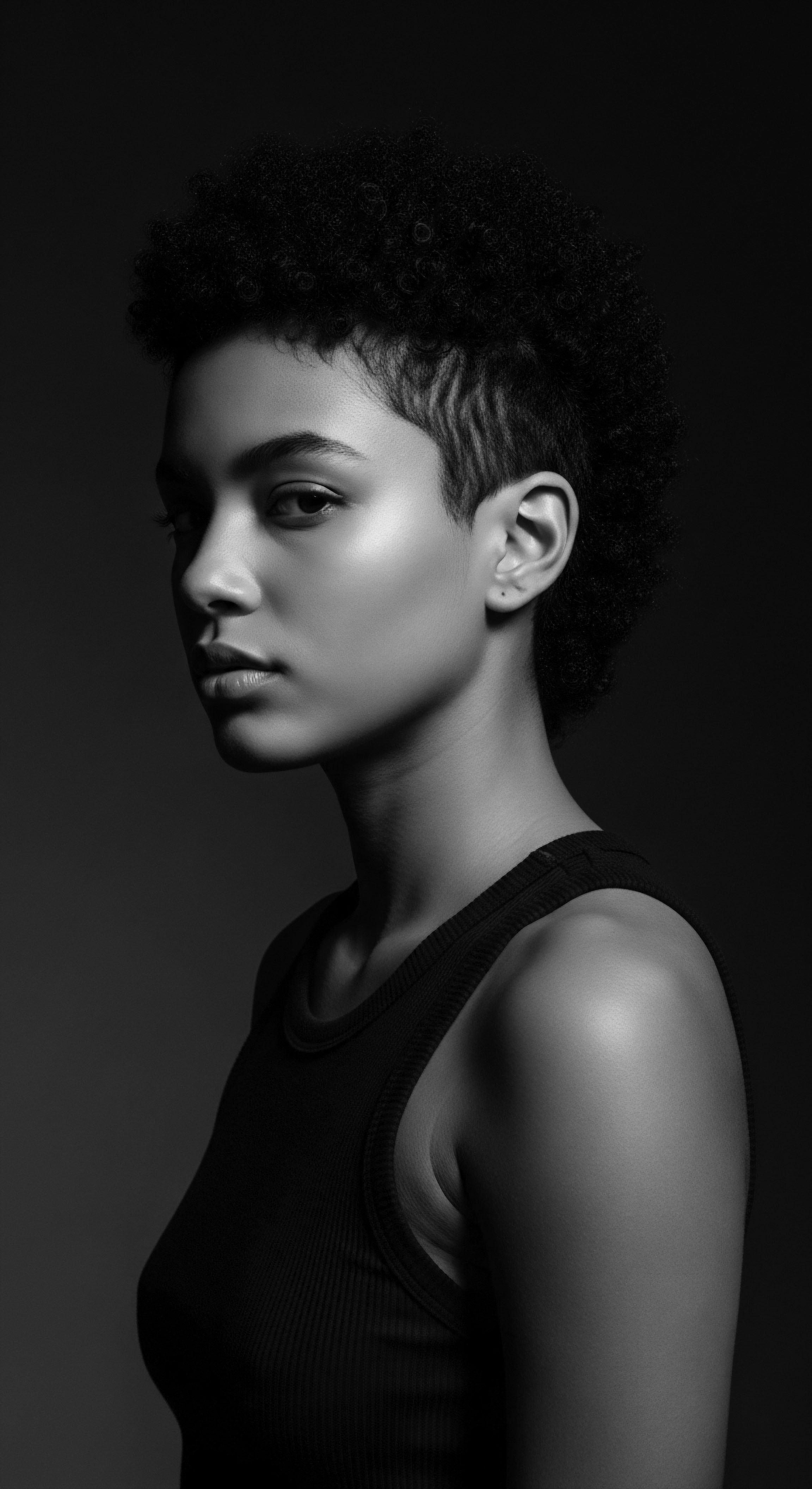
Tracing Hair’s Ancient Biology
The biological reality of textured hair, its coiling nature, was understood by ancient communities in a practical sense. They perhaps did not possess electron microscopes, yet their centuries of accumulated wisdom provided insights into preventing damage. The very act of gathering and securing hair close to the scalp, or binding it into lengths that minimized exposure, intuitively aligned with principles of modern trichology. These ancestral methods reduced environmental stressors such as harsh sunlight, drying winds, and dust, preserving the hair’s natural moisture.
The cyclical journey of hair growth, from its active phase to its resting and shedding periods, was likely observed and incorporated into traditional hair care. Long periods of growth, often associated with health and fertility in many African cultures, were supported by practices that shielded the hair from physical abrasion and breakage, allowing it to reach its fullest potential. This deep, patient understanding of hair’s needs formed the bedrock upon which protective styling was built, an intricate relationship between human ingenuity and natural biology, honed by the passage of time.
Ancestral hair practices offer a living testimony to astute biological observation, emphasizing gentle preservation of hair’s inherent nature.
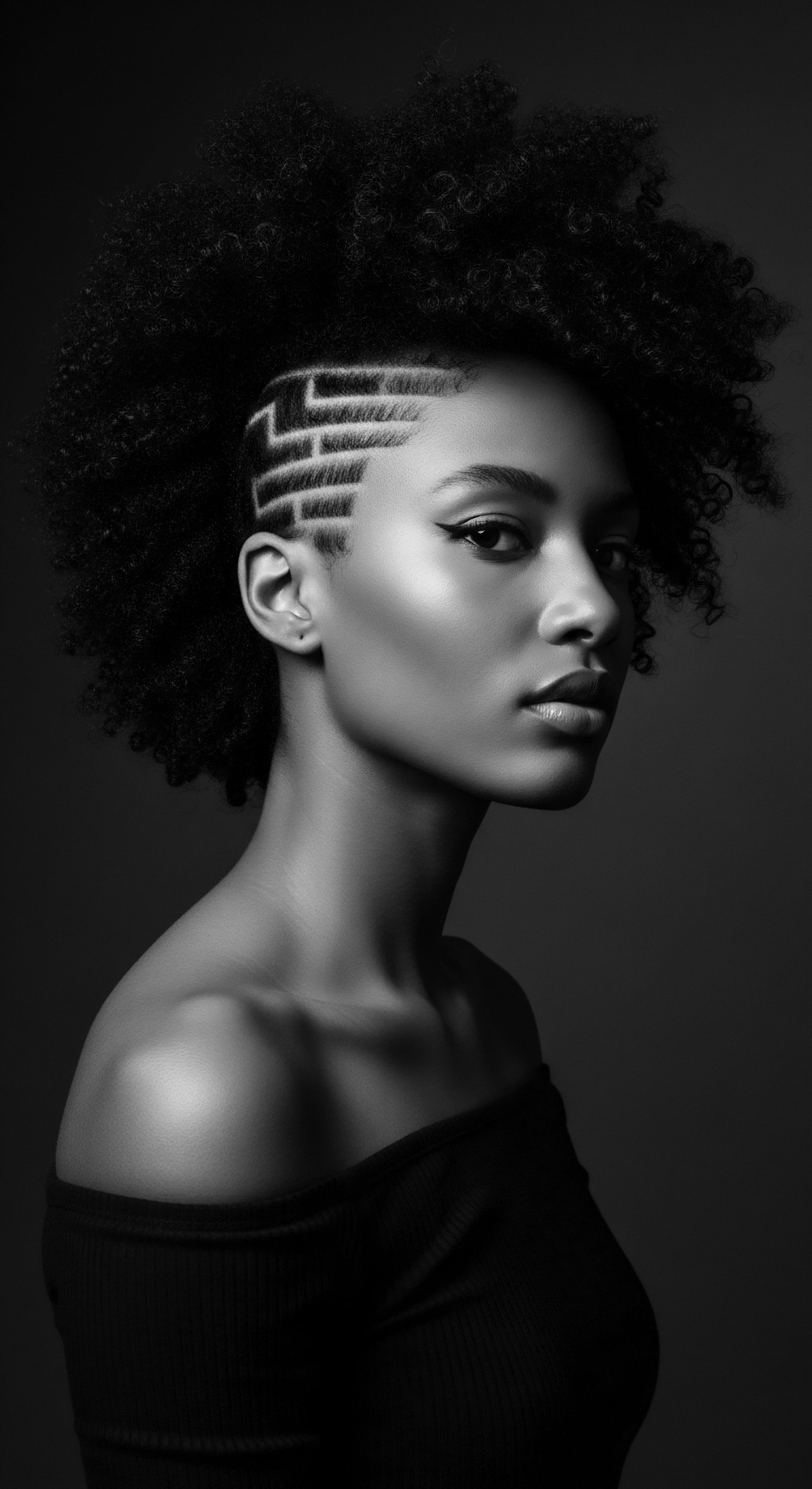
What is the Historical Essence of Hair Adornment?
Beyond its protective function, hair adornment held profound spiritual and social weight. In many ancient African societies, hair was regarded as the highest point of the body, a conduit for spiritual energy and a connection to the divine. For the Yoruba people, for example, braided hair could send messages to the gods, making the styling process a sacred act. This belief imbued hair with a spiritual power, setting the stage for rituals that honored and cared for it with profound respect.
Adornments, from cowrie shells to beads, were not merely decorative; they too held symbolic meaning, reflecting status, wealth, or specific life events. These traditions illustrate how hair care was intricately linked to religious beliefs, extending beyond simple aesthetics to become an expression of one’s spirituality and connection to ancestral realms.
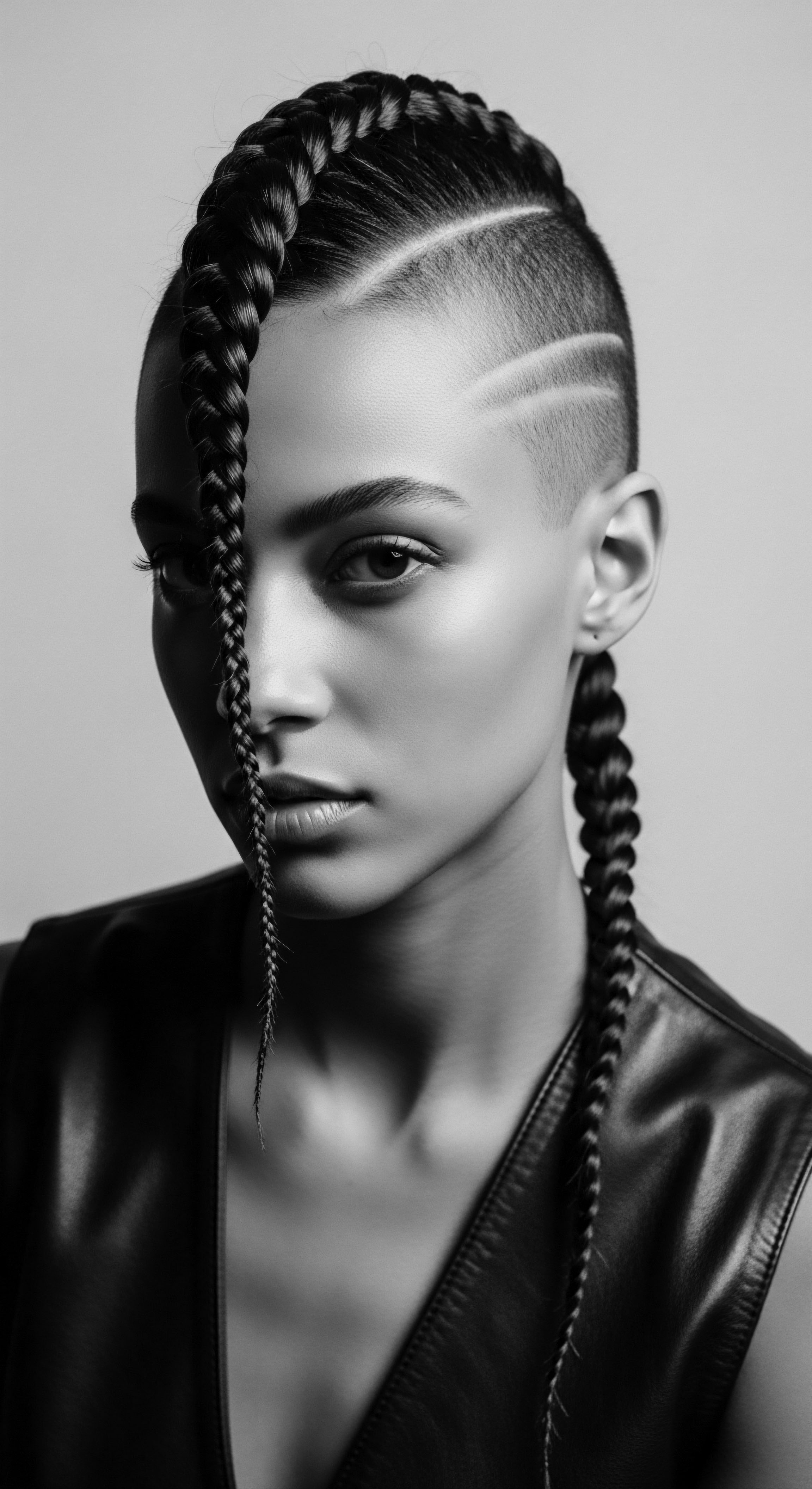
Ritual
The artistry of textured hair styling is a profound ritual, a living library of techniques, tools, and transformations passed through hands across generations. Protective styles stand as monumental chapters in this archive, their origins steeped in the practical necessities and symbolic languages of African communities. These are not mere fashion statements, but rather a blend of ingenious solutions and enduring cultural expression. From the tight, geometric precision of cornrows to the versatile coils of Bantu knots, each style carries a story, a heritage of resilience and beauty.
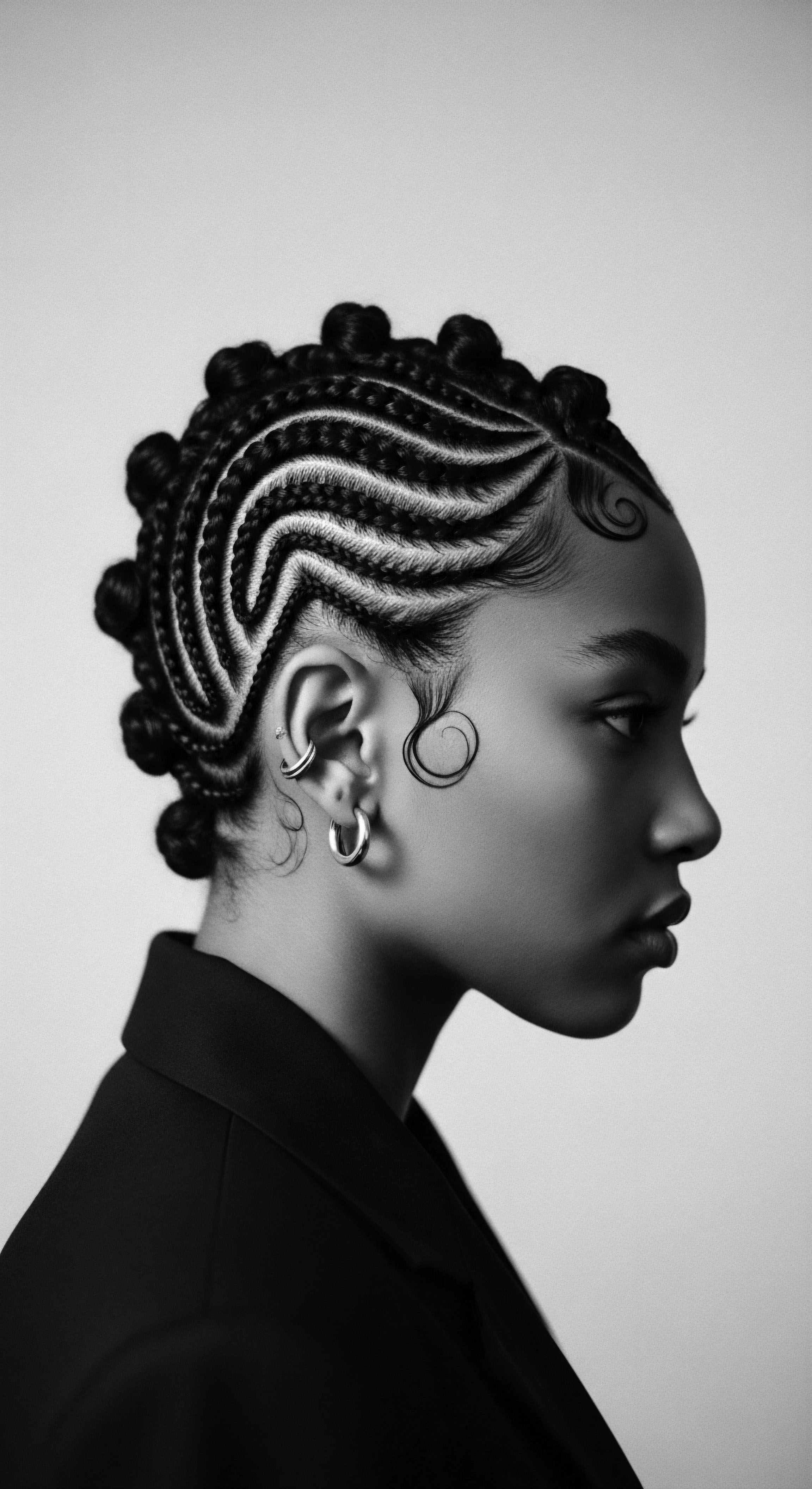
How Did Ancestral Practices Shape Styling Tools?
Long before the advent of modern hair tools, ancestral communities crafted implements from the natural world to aid in their styling practices. Bone combs, wooden picks, and intricately carved hairpins were used to section, detangle, and secure hair. The very act of preparing and styling hair was often a communal affair, a time for storytelling, imparting wisdom, and strengthening social bonds.
These sessions, often spanning hours or even days, served as vital conduits for transmitting cultural knowledge and preserving heritage. Such communal practices underscore a fundamental truth ❉ hair care was, and for many remains, a deeply social and intergenerational activity.
- Bone Combs ❉ Early tools for detangling and creating partings, crafted from animal bones, reflecting a resourcefulness tied to the natural environment.
- Wooden Picks ❉ Utilized for sculpting, lifting, and arranging hair, often showcasing intricate carvings that held symbolic meaning for the user or community.
- Natural Fibers ❉ Used for threading techniques to stretch and straighten hair without heat, a method still practiced in some communities today.
The range of protective styles, from single braids to complex interwoven patterns, served distinct purposes. They shielded delicate ends from breakage, minimized environmental exposure, and reduced the need for daily manipulation, allowing hair to rest and grow. This was especially important for textured hair, which benefits immensely from practices that seal in moisture and prevent physical stress. The evolution of these styles, from practical solutions to intricate artistic expressions, speaks volumes about the creative spirit of those who wore and created them.
| Historical Style Name Cornrows (e.g. Nsu Braids in Ghana) |
| Traditional Purpose and Region Signified tribal affiliation, marital status, age, wealth, and religion; used as communication during enslavement (Africa, African Diaspora). |
| Contemporary Hair Health Benefit Reduces manipulation and breakage, protects scalp, retains moisture, allows hair to rest. |
| Historical Style Name Bantu Knots |
| Traditional Purpose and Region Originated in Southern Africa, often used for setting curls or as a standalone protective style. |
| Contemporary Hair Health Benefit Minimizes tangling, retains moisture, defines curl pattern without heat. |
| Historical Style Name Locs |
| Traditional Purpose and Region Symbolized spiritual connection, social status, and identity in various African communities (e.g. Akan priests in Ghana). |
| Contemporary Hair Health Benefit Long-term hair protection, minimal manipulation, allows for substantial length retention. |
| Historical Style Name These styles demonstrate an enduring legacy of care, merging practical hair preservation with profound cultural meaning. |

How Did Enslavement Transform Hair Practices?
The transatlantic slave trade drastically disrupted these rich traditions. Enslaved Africans were often stripped of their intricate hairstyles, their heads shaved as a deliberate act of dehumanization and an attempt to erase their cultural identity. Removed from their homelands, they lost access to traditional tools, oils, and the communal time essential for hair care. Yet, resilience prevailed.
Protective styles, particularly cornrows, transformed into tools of survival. Enslaved individuals braided rice and seeds into their hair as a means of sustenance, and patterns within cornrows served as covert maps for escape routes. This harrowing period highlights the deep adaptability and ingenuity of hair practices, which shifted from expressions of social standing to vital instruments of resistance.
Hair, in times of oppression, became a clandestine map, a silent act of defiance.
Even after the era of slavery, the challenges persisted. The imposition of Eurocentric beauty standards often compelled Black women to alter their hair texture, pursuing straightness through harsh chemicals or heat. This pursuit, while driven by societal pressures for assimilation and perceived opportunities, often resulted in significant hair and scalp damage.
The “hot comb era” and the widespread use of chemical relaxers, though offering a pathway to conformity, carried a heavy cost for hair health. The re-emergence of natural styling in the Civil Rights era, and again in the early 2000s, represented a powerful reclamation of heritage and a renewed focus on hair’s natural vitality, driven by concerns for health and self-acceptance.

Relay
The journey of protective styles from ancient practices to contemporary hair health is a continuous relay of ancestral wisdom, adaptation, and scientific validation. Our understanding of holistic hair care today is deeply informed by the meticulous routines of past generations. These regimens were not simply about aesthetics; they were interwoven with a broader philosophy of wellbeing, recognizing the hair and scalp as integral to the body’s overall vitality. The contemporary emphasis on moisture retention, minimal manipulation, and scalp health finds its direct lineage in these time-honored practices.
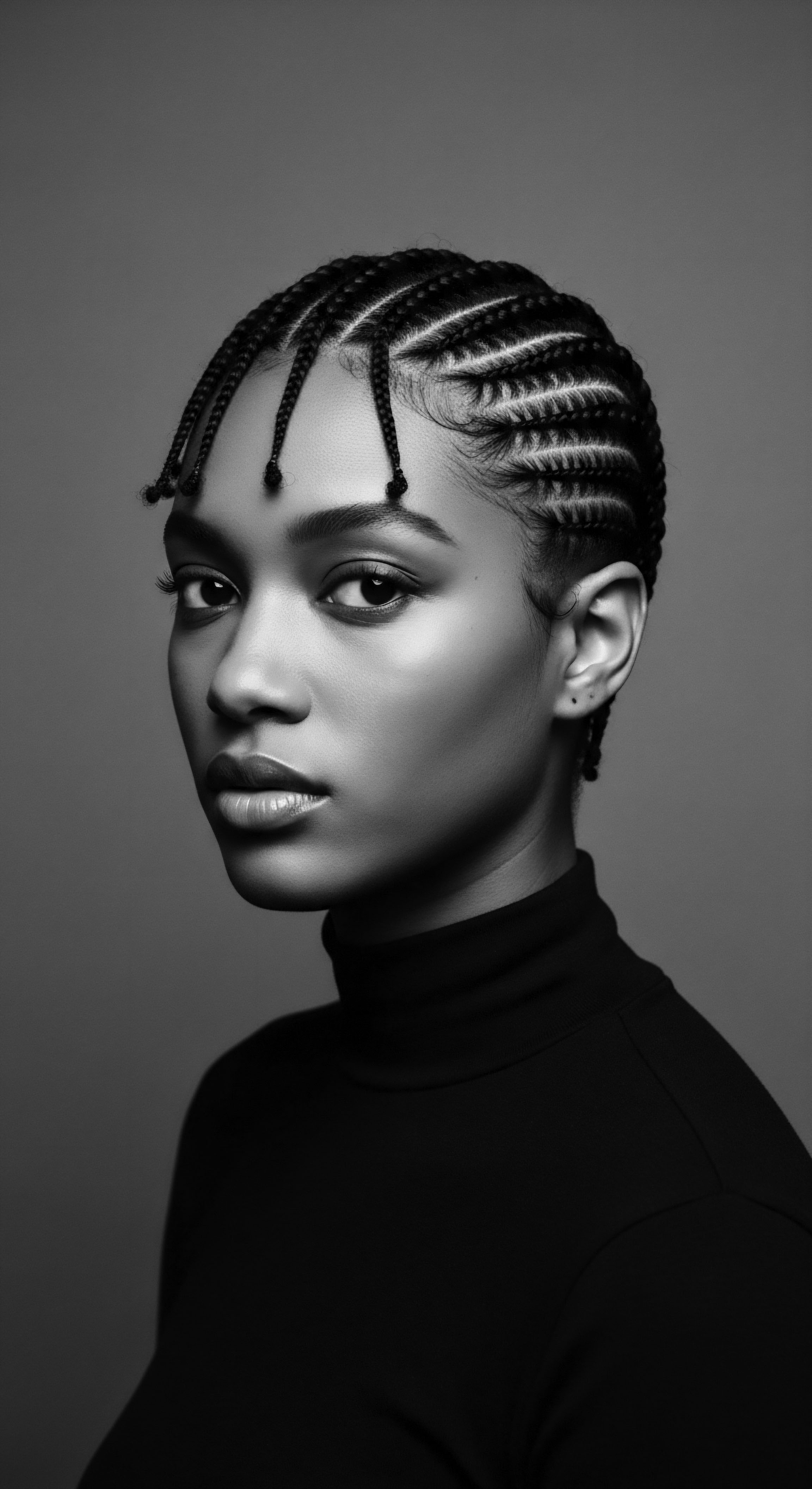
How do Modern Routines Echo Ancestral Wellness?
Building personalized textured hair regimens in the present day often mirrors the holistic principles observed by our forebears. They understood that healthy hair begins with a nourished scalp and that consistent, gentle handling preserves the hair’s length and strength. Contemporary science validates much of this ancestral wisdom.
The tightly coiled structure of textured hair, with its propensity for dryness, benefits immensely from practices that seal in hydration and guard against external stressors. This biological reality made protective styles a practical necessity across many African climates and continues to underpin their utility today.
One powerful example of this historical wisdom manifesting in modern care is the use of Chebe powder from Chad. This traditional mixture, often including cherry seeds, cloves, and Chebe seeds, is applied to hair to promote length and luster. While not a “miracle product” for growth, its traditional application, combined with extended periods of protective styling, works by reducing breakage and aiding length retention. This age-old ritual, passed down through generations of Chadian women, underscores the long-standing emphasis on preventing physical damage to achieve and maintain healthy hair.
The significance of nighttime hair sanctuary, often involving silk or satin scarves and bonnets, is another direct descendant of ancestral wisdom. While some traditional African head coverings held social or ceremonial meaning, the practical benefit of protecting hair while sleeping was implicitly understood. Cotton pillowcases can draw moisture from hair and create friction, leading to tangles and breakage.
The soft, smooth surfaces of silk or satin minimize this friction, preserving moisture and extending the life of protective styles, truly allowing the hair to rest and remain undisturbed. This practice, now a staple in many textured hair care regimens, speaks to a heritage of thoughtful preservation.
- Silk and Satin Fabrics ❉ Preferred for head coverings and pillowcases, these materials minimize friction and moisture loss, preserving the hair’s natural oils and preventing tangles.
- Oils and Butters ❉ Natural emollients like shea butter and coconut oil, used ancestrally, continue to be staples for sealing in moisture and softening hair.
- Herbal Infusions ❉ Traditional remedies incorporating herbs and plants, much like modern hair masks and treatments, nourished the scalp and strengthened hair strands.
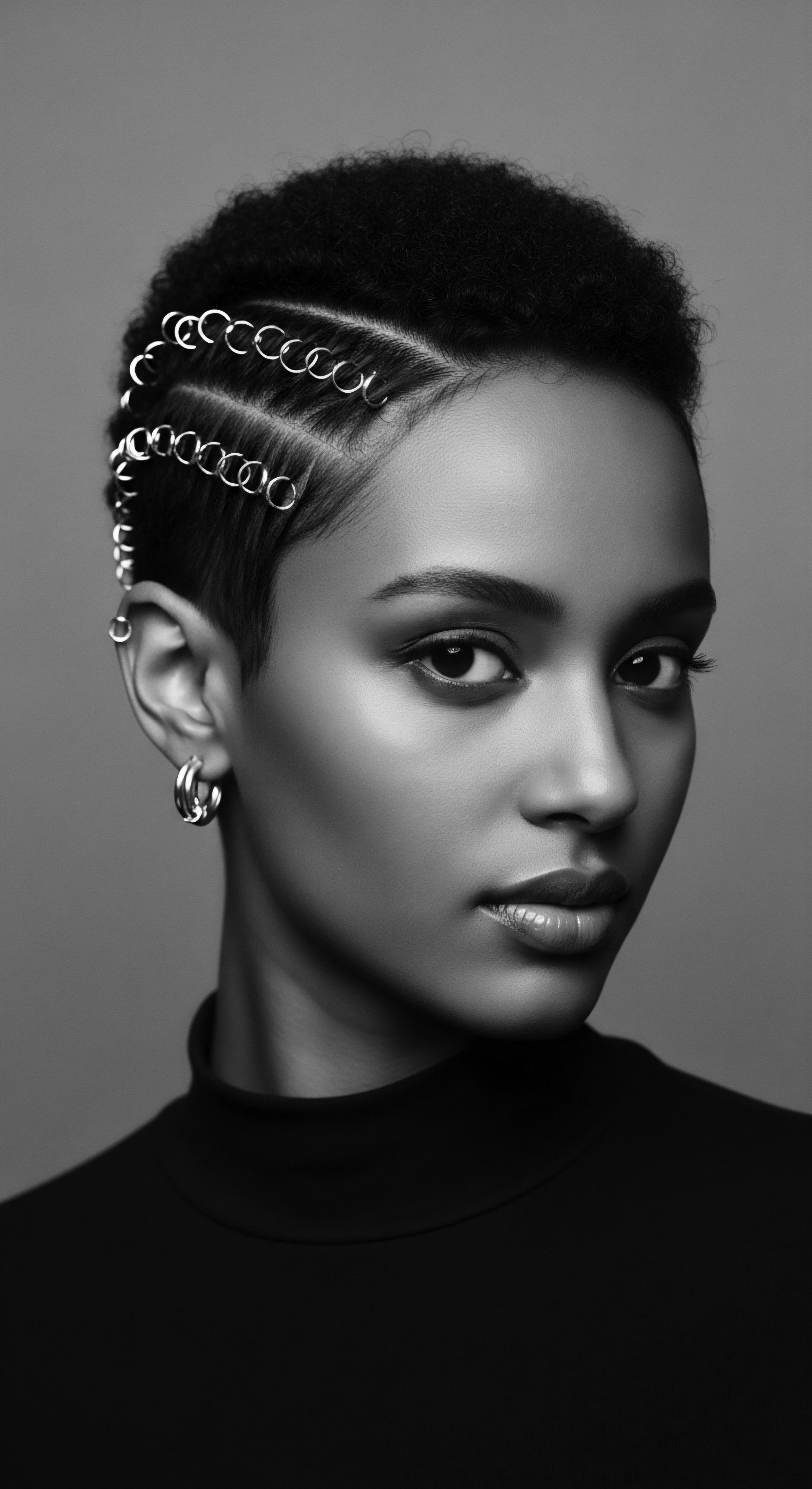
What Contributes to Contemporary Hair Challenges?
Despite the enduring wisdom of protective styles, contemporary society presents unique challenges for textured hair health, deeply rooted in historical inequities. The pervasive discrimination against natural hair, stemming from Eurocentric beauty standards imposed during slavery, continues to influence hair care choices and health outcomes. This historical bias, which pathologized tightly coiled hair, contributes to an ongoing struggle for acceptance and can lead to psychological distress for individuals.
Consider the phenomenon of traction alopecia, a form of hair loss caused by prolonged or repetitive tension on the hair follicles. While protective styles are designed to safeguard hair, incorrectly installed or overly tight braids, weaves, or extensions can paradoxically contribute to this condition. This complexity highlights a critical intersection of heritage and health ❉ traditional styles, when applied with historical care and understanding of the hair’s limits, serve their protective purpose.
However, modern adaptations, sometimes driven by aesthetic pressures or a lack of ancestral knowledge, can inadvertently cause harm. Addressing this requires a renewed commitment to education, emphasizing healthy application techniques that honor the hair’s fragility while celebrating its stylistic versatility.
Contemporary hair challenges reflect historical biases, underscoring the ongoing need for informed care practices rooted in ancestral understanding.
The CROWN Act, a legislative effort in various states, aims to combat race-based hair discrimination by protecting individuals who wear natural and protective styles. This act acknowledges that hair discrimination is a form of racial discrimination, impacting opportunities in schools and workplaces. Its existence confirms the ongoing legacy of historical perceptions about textured hair and the necessity of legal protection to ensure individuals can embrace their natural heritage without penalty.

Reflection
The intricate dance between protective styles and contemporary hair health is a profound meditation on memory, resilience, and the continuous unfolding of identity. It is a story not confined to textbooks, but one that lives within each strand, passed from elder to youth, from ancestral practice to modern adaptation. The inherent wisdom of our foremothers, who through careful observation and ingenious methods shielded their textured hair from the elements, speaks to us across centuries. These are not merely ancient customs; they represent a deep, enduring legacy of self-care and communal bonding.
Today, as we seek optimal hair health, we find ourselves returning to these foundational truths. The simple act of braiding, twisting, or coiling hair away from daily manipulation, minimizing friction and exposure, echoes the very core of protective styling. This continuum of care underscores that the ‘Soul of a Strand’ is intertwined with history, its vibrant texture a testament to the journey through time.
It is a celebration of a heritage that found strength, beauty, and practical solutions in the very nature of textured hair, creating a blueprint for wellness that remains as relevant today as it was millennia ago. We continue to learn from these rich narratives, ensuring that each generation understands the profound significance of their hair as a living connection to their past and a powerful expression of their present.
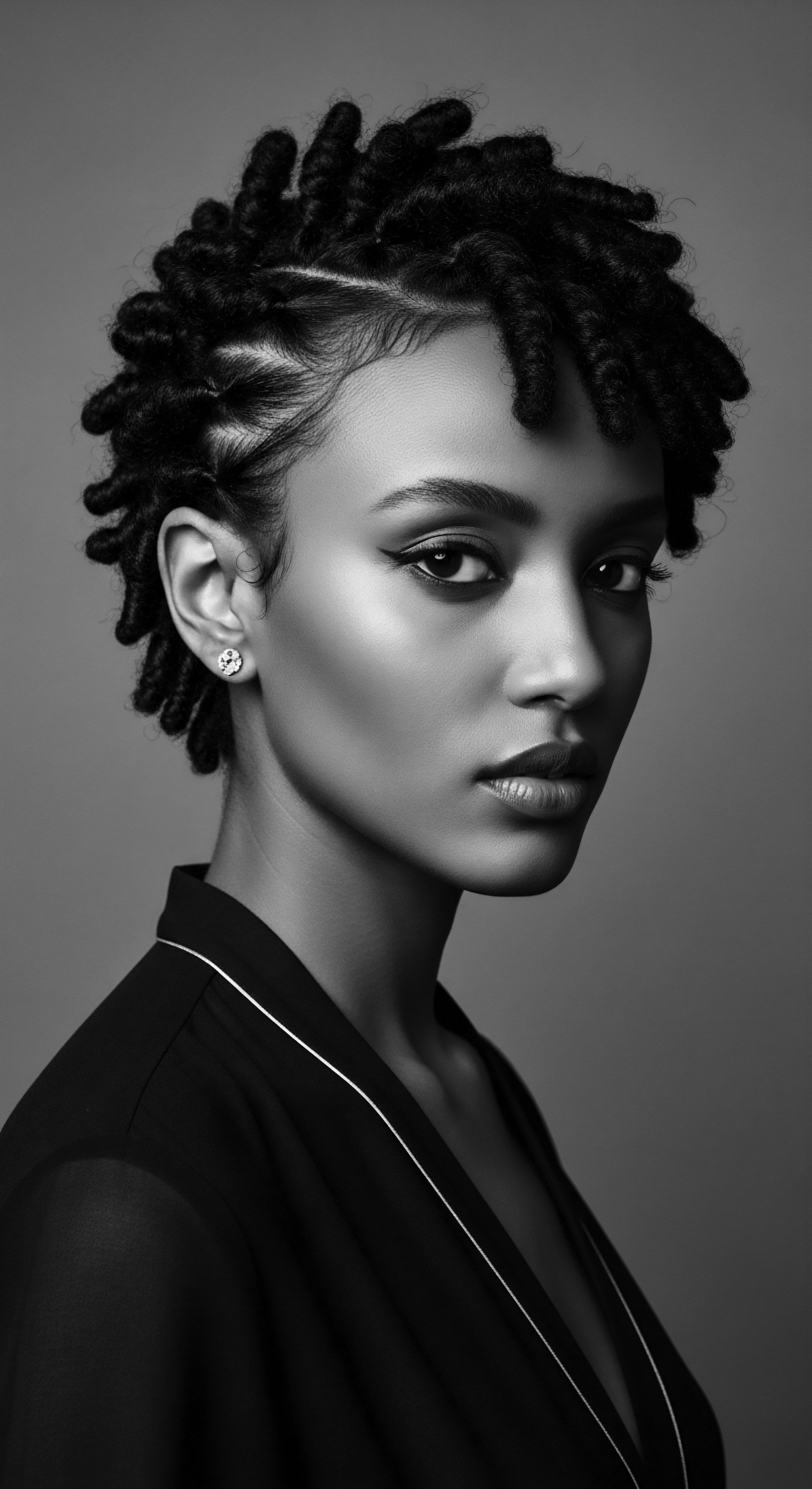
References
- Byrd, Ayana D. and Lori L. Tharps. Hair Story ❉ Untangling the Roots of Black Hair in America. St. Martin’s Griffin, 2001.
- Jackson, Brooke, and Aliya Rodriguez. “What Every Dermatologist Must Know About the History of Black Hair.” Journal of Drugs in Dermatology, vol. 22, no. 11, 2023, pp. 1032-1036.
- Matjila, Chéri R. “The Meaning of Hair for Southern African Black Women.” Dissertation, University of the Free State, 2020.
- Mbilishaka, Afiya. “PsychoHairapy ❉ Brushing Up on the History and Psychology of Black Hair.” Psi Chi Journal of Psychological Research, vol. 28, no. 1, 2023, pp. 62-73.
- White, Shane, and Graham White. “Slave Hair and African American Culture in the Eighteenth and Nineteenth Centuries.” The Journal of Southern History, vol. 61, no. 1, 1995, pp. 45-76.
